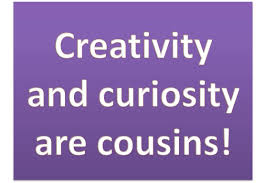
(Q1) It would be too broad and sweeping a statement to say that ALL schools in the US destroy or inhibit the development of curiosity and creativity in students, but the demands of No Child Left Behind and the emphasis on standardized testing have certainly made it difficult for teachers to create opportunities for creativity and curiosity in students. Unfortunately, standardized tests and educational reform have propagated a “test mentality” on teachers and their lessons. However, some schools and some teachers certainly try to create opportunities for both creativity and curiosity. (Q2) Curriculum can certainly be developed to increase curiosity in students; however, teachers must feel comfortable and confident enough to carry out lessons that develop curious students. Many teachers do not feel confident enough in their knowledge to encourage curiosity in their students because a curious student makes more demands on the teacher, particularly his or her knowledge of subject matter. One key component of a curriculum to develop curiosity would certainly be technology. Embracing all the information that technology affords this generation, usually at the “click of a mouse,” would encourage a student’s curiosity. Finding ways to incorporate technology and its resources into a curriculum would be a simple way to allow students to “have questions” but also allow them to find a way to answer those questions, and possibly create more questions to keep the cycle in motion.(Q3) A curriculum to increase creativity would be a much more difficult task because it is very difficult to assess creativity. Since today’s culture is so “grade conscious” and every assignment must be graded objectively, it is very difficult for teachers to find a balance between grading the content of an assignment and grading the creativity of the assignment. However, there are certainly ways for a curriculum to encourage creativity. For instance, in my Spanish class we were learning the basic vocabulary associated with clothing. We were assigned a project that was to demonstrate our mastery of the vocabulary in a creative way. Some of us chose the very “safe” power point presentations, but others felt comfortable “taking a risk” and choosing a creative way to approach the assignment. One group created a fashion catalog featuring descriptions of garments in Spanish; another produced a live fashion show with the models describing their clothing in Spanish. Because this project could be assessed for content knowledge in a very objective way, it allowed us to be creative and “think outside the box” without fear.
(Q4) In my opinion, a teacher who models curiosity will certainly encourage curiosity in his/her students. Any time I find something interesting and do personal research about something, I will try to share my experiences with my future students. If a student doesn't know a word by context, he/she is encouraged to look it up and share the information with the class. If an allusion or an analogy is made that isn't immediately recognized, we will research the allusion(analogy) and share the information, encouraging curiosity. (Q5) Along the same lines as question three, teachers have many opportunities to encourage creativity in students. By accepting that there are many different ways to learn content standards and embracing the different learning styles of students, teachers can certainly create opportunities for students to learn in creative ways. The Spanish vocabulary lesson (see above) is just one example. I once had a history teacher in my school who had us “act out” myths from mythology with a modern twist. Although this can be “risky” for the teacher to relinquish control, it is a lesson that I will always remember and enjoy. It came me and my class control of the learning experience and encouraged creativity.
(Q6) As a teacher, I would feel more open to creativity if there was not the burden of testing and grading. If school systems would encourage creativity in its teachers and administrators and NOT feel the pressure of the test scores or AYP (yearly progress reports for schools), teachers may feel more willing to take creative risks in their classrooms. Also, if teachers have an opportunity to collaborate with other teachers (in their building, their system, and even outside their systems), it would foster a sense of creativity. (Q7) I’m not certain that people can become curios. Curiosity seems to be something innate in a person or not. There are simply people (teachers and students) who are NOT curious. On the other hand, there are people who are naturally curious. The balance for teachers and schools would be to create opportunity to encourage the reluctant curiosity of some while nurturing the curiosity of the innately curious student. Probably the best thing a teacher or school could do would be to give opportunities for curiosity to be cultivated. And that is exactly what I plan on doing!


